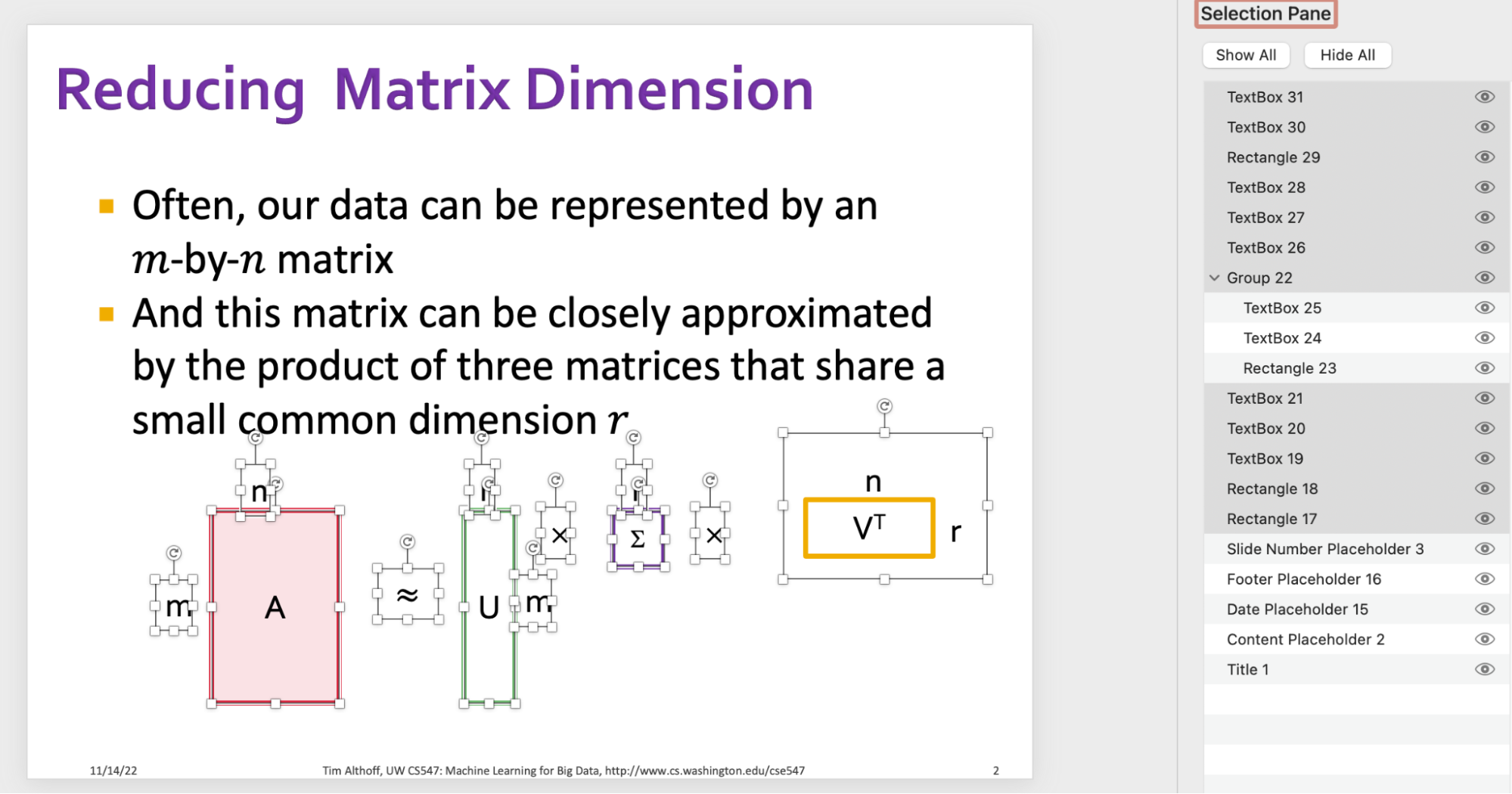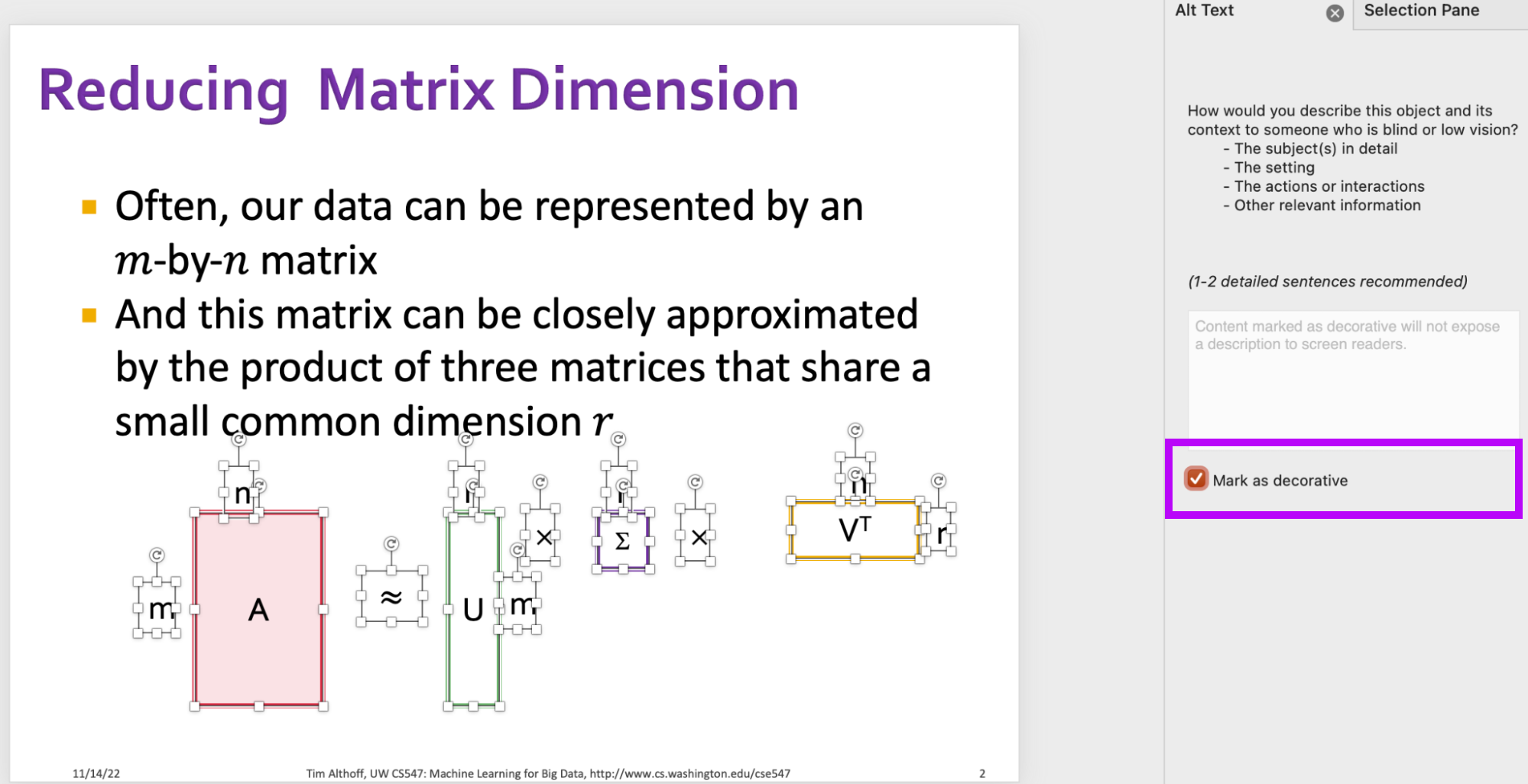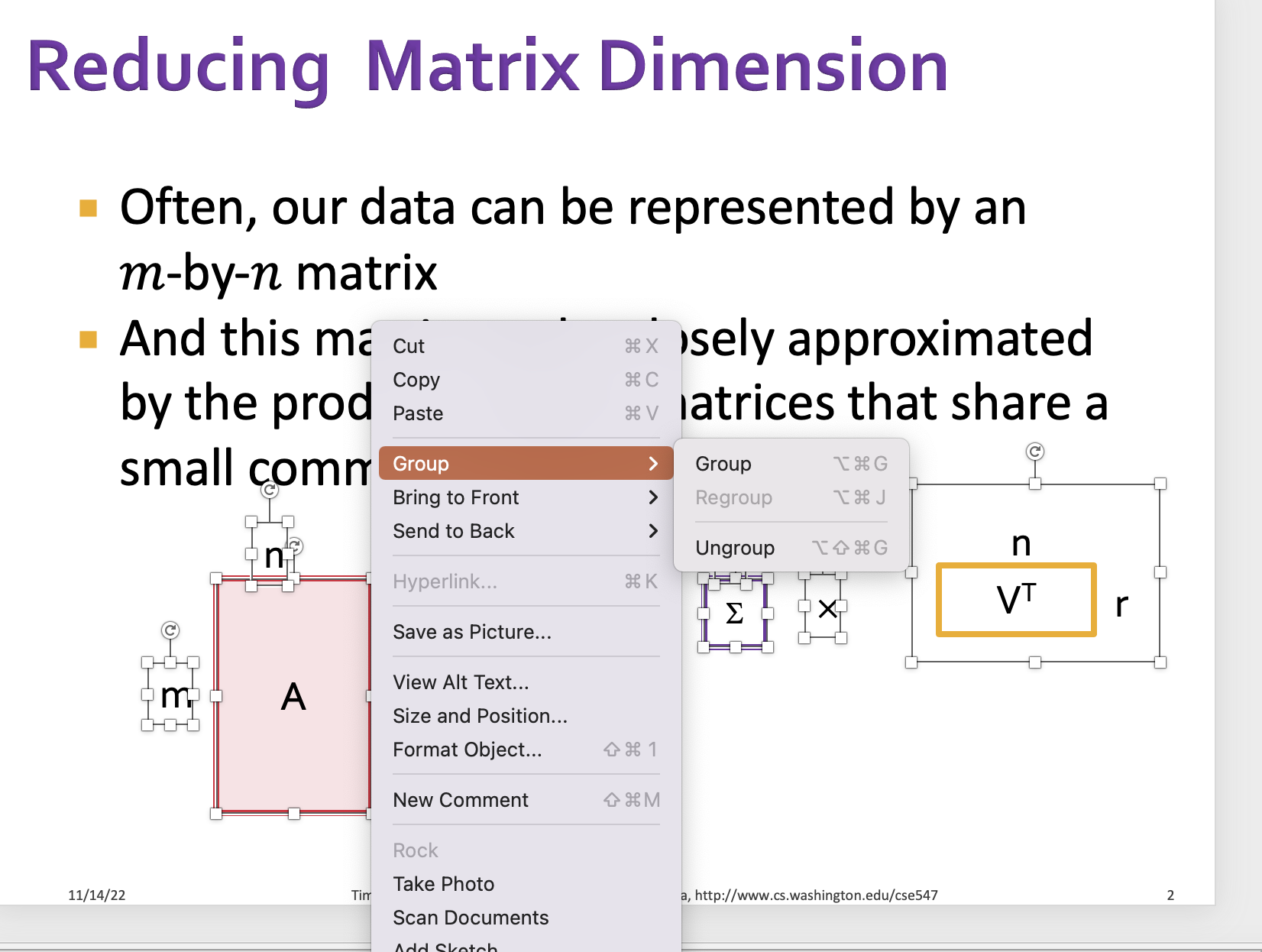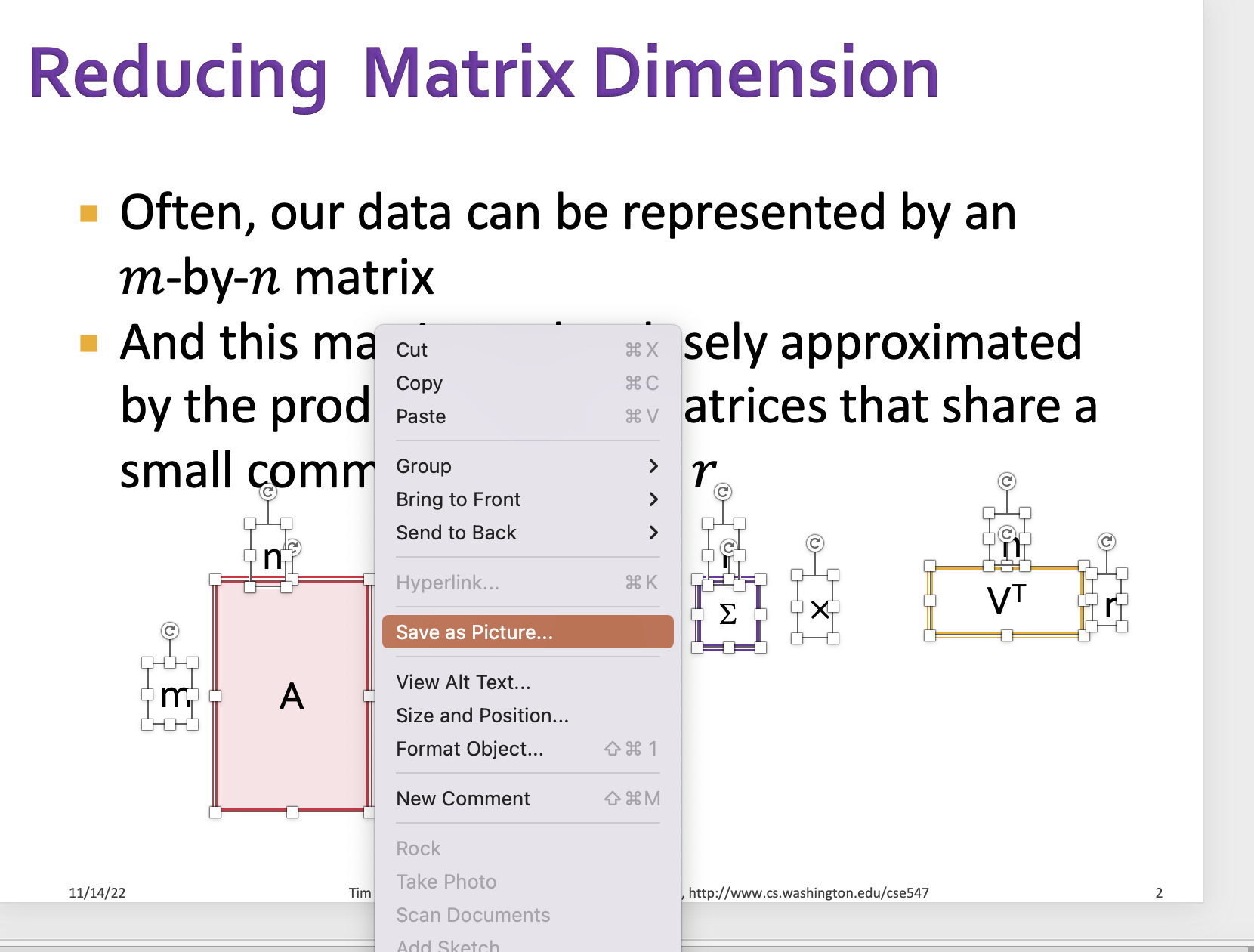Group Images on PowerPoint
For complex diagrams with many sub-images, if you don’t group the pictures, the screen reader users will likely (and unnecessarily) be overwhelmed and confused. This page includes two approaches to group images on PowerPoint.
- Why do we need to group images?
- Approach 1: Group the images on PowerPoint
- Approach 2: Save as Picture
Why do we need to group images?
Let’s walk through the example below about Singular Value Decomposition (SVD). As you can see it’s an SVD equation $A = U \Sigma V^T$, but there are just so many unorganized pointers such as $m$ rows, $n$ columns, approximation sign ($\approx$), $r$ columns/rows, etc. You can also see the messiness on the Selection Pane. (Please look at the reading order section; it is important!) Now, there are two ways to resolve this issue.

Approach 1: Group the images on PowerPoint.
1. Select each of the pictures you want to group.
Right-click on the selected images/texts, etc → View Alt Text … → Mark as decorative. By marking them as decorative, the screen reader will streamline its focus onto the entire group rather than each individual element. We want the screen reader to read the grouped content as a cohesive unit. This prevents potential confusion or redundancies, leading to a smoother user experience.

2. Group the components.
Right-click on the selected images/texts, etc → Group → Group. Yes, “Group” under “Group”.

3. Add alt text to the group.
At this step, all the components should be in a group. You need to add alt text to the group.

Approach 2: Save as Picture
1. Select the components and save as picture
Select the pictures you want to group → Save as Picture …

2. Drag the saved picture from your folder to this slide.
If you want to revert the saved picture to its original position, don’t delete the original components. You can overlay the saved picture with the original components. When they overlap, cut the saved picture → select the original components → delete → paste the saved picture. You are all set now.
3. Add alt text to the picture.
You can add alt text to the new component as an image!